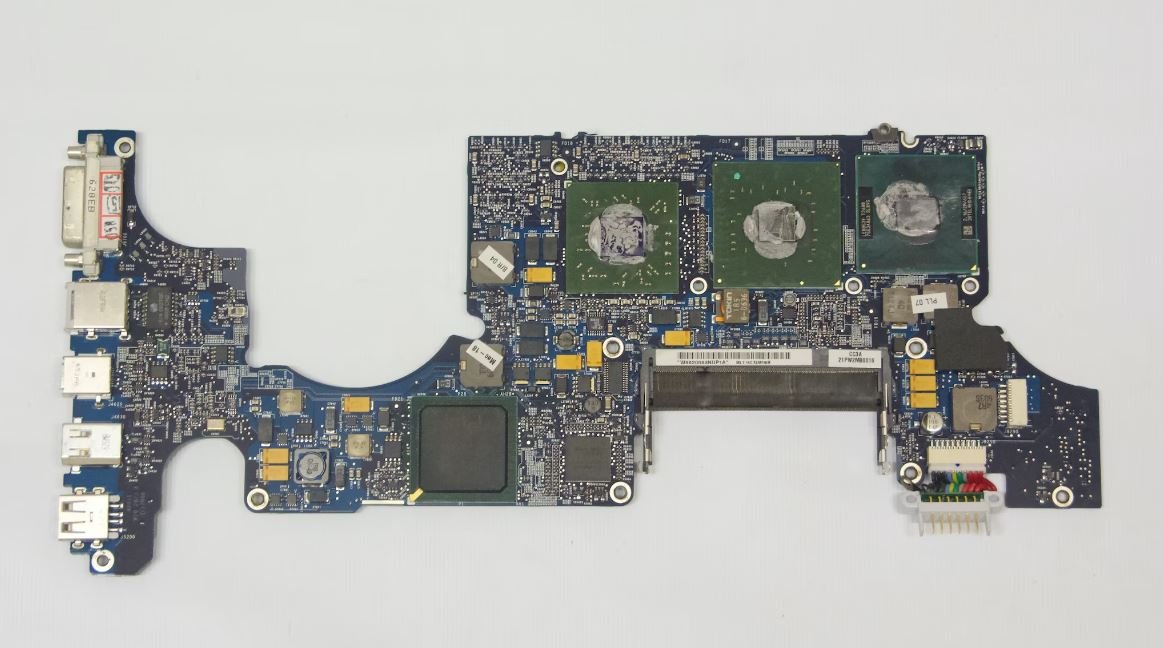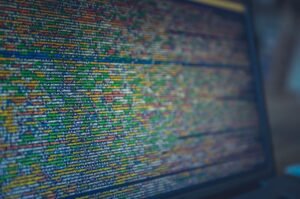AI Deepfake Audio
With the advancements in artificial intelligence (AI), a new alarming technology has emerged—AI deepfake audio. Deepfake audio refers to the use of AI algorithms to create realistic fake audio that can mimic anyone’s voice, causing significant concerns for privacy, security, and trust. This technology has made it easier than ever to manipulate and fabricate audio content, raising ethical and legal questions.
Key Takeaways
- AI deepfake audio allows for the creation of realistic fake audio that can mimic anyone’s voice.
- Privacy, security, and trust are major concerns surrounding deepfake audio technology.
- Ethical and legal questions have arisen due to the increased ease of manipulating and fabricating audio content.
**AI deepfake audio** works by using AI algorithms, such as **deep neural networks**, to analyze and understand the unique characteristics of a person’s voice, including pitch, tone, and rhythm. It then uses this information to generate new audio that sounds remarkably authentic and can resemble the voice of someone else, known or unknown. These advancements in AI technology have allowed deepfake audio to become increasingly convincing, making it difficult to detect and identify fake audio recordings.
*Deepfake audio poses a serious threat* as it can be used for various malicious purposes, such as spreading disinformation, creating fake evidence, or impersonating someone for fraudulent activities. It can be used to manipulate speeches, interviews, phone calls, and other audio content, potentially leading to harmful consequences for individuals and society as a whole.
Impact and Concerns
- Deepfake audio poses a significant threat to **privacy**, as it can be used to create audio recordings without consent or knowledge of the targeted individuals.
- The technology raises **security concerns**, as it enables the creation of audio deepfakes that can be used for social engineering attacks or to manipulate public opinion.
- Deepfake audio contributes to a crisis of **trust**, as it becomes increasingly difficult to discern between authentic and fake audio recordings.
AI deepfake audio has led to a flurry of **ethical** and **legal questions**. The technology challenges notions of truth and authenticity, and raises concerns about potential misuse. Questions regarding consent, intellectual property rights, defamation, and the responsibility of technology platforms have come to the forefront.
*While efforts are being made to combat deepfake audio,* it remains an ongoing challenge. Detecting and identifying deepfake audio requires the development of advanced algorithms, as AI deepfake techniques continue to evolve. Educational initiatives and awareness campaigns are necessary to inform the general public about the existence and potential dangers of deepfake audio.
Tables
| Use Cases of AI Deepfake Audio | Examples |
|---|---|
| Disinformation campaigns | Spreading fake news through manipulated audio recordings. |
| Fraudulent activities | Impersonating someone’s voice for financial scams or extortion. |
| Social engineering attacks | Manipulating audio evidence to deceive individuals or organizations. |
| Preventing and Detecting Deepfake Audio | Techniques |
|---|---|
| Voice biometrics | Analyzing voice patterns and characteristics to verify authenticity. |
| Blockchain technology | Using distributed ledger to ensure audio recordings’ integrity and traceability. |
| Advanced AI algorithms | Continuously improving AI models to detect subtle signs of manipulation. |
| Current Legislation on Deepfake Audio | Examples |
|---|---|
| California Penal Code Section 632 | Prohibits recording or eavesdropping on confidential conversations without consent. |
| House Resolution 3230 | Calls for studying and addressing the threats posed by deepfake technology. |
| European Commission’s Digital Services Act | Addresses illegal and harmful content, including deepfakes. |
In conclusion, AI deepfake audio is a rapidly advancing technology that brings a multitude of concerns and challenges. From privacy and security risks to ethical and legal questions, deepfake audio’s implications are far-reaching. It is imperative that individuals, organizations, and policymakers stay informed and proactive in addressing these issues to mitigate the potential negative impacts of AI deepfake audio.

Common Misconceptions
Misconception 1: AI Deepfake Audio is always accurate
One common misconception people have about AI Deepfake Audio is that it is always accurate and indistinguishable from real audio recordings. However, this is not true as current AI technologies still have limitations and may produce artifacts or subtle errors in the synthesized audio.
- AI Deepfake Audio can sometimes have slight distortions or unnatural tones.
- Some unfamiliar words or phrases may be mispronounced or sound strange.
- Emotional nuances in the original audio might not always be accurately replicated.
Misconception 2: AI Deepfake Audio is only used for malicious purposes
Another misconception is that AI Deepfake Audio is only used for nefarious purposes, such as impersonating someone or spreading misinformation. While there have been instances of misuse, this technology also has legitimate applications that can be beneficial.
- AI Deepfake Audio can be used to enhance voice-activated assistants or speech synthesis systems.
- It can aid in creating natural-sounding voiceovers for movies, audiobooks, or advertisements.
- This technology has potential for vocal coaching or therapy to mimic desired speech patterns.
Misconception 3: AI Deepfake Audio can perfectly imitate anyone’s voice
Many people believe that AI Deepfake Audio can flawlessly imitate anyone’s voice, but this is not entirely accurate. While AI models can approximate and mimic a person’s voice, there are still limitations when it comes to replicating unique vocal characteristics.
- Subtle speech patterns or accents specific to a person may not be fully captured in the AI synthesis.
- The overall timbre or texture of a person’s voice might be challenging to replicate accurately.
- AI Deepfake Audio may not be able to imitate age-related changes in voice accurately.
Misconception 4: AI Deepfake Audio is ready to use by anyone
Some people assume that AI Deepfake Audio is readily available and accessible to anyone without technical expertise. However, creating high-quality deepfake audio typically requires specialized knowledge, training, and computational resources.
- Generating convincing AI Deepfake Audio often requires large datasets and powerful hardware.
- Developing realistic voice clones with AI technology requires expertise in machine learning and audio processing.
- Training and fine-tuning an AI model for specific voices can be a complex and time-consuming process.
Misconception 5: AI Deepfake Audio is the only concern with manipulated audio
Finally, it is a common misconception that AI Deepfake Audio is the primary concern when it comes to manipulated audio. While this technology does pose risks, other traditional audio editing techniques, such as selective editing or voice dubbing, can also be used to manipulate audio for unethical purposes.
- Traditional audio manipulation techniques like splicing or pitch shifting can still be used to create deceptive audio.
- Audio editing software can be employed to remove or add words or phrases without relying on AI Deepfake Audio.
- Combining AI Deepfake Audio with traditional techniques can further enhance audio manipulation capabilities.

Introduction
AI deepfake audio technology is becoming increasingly sophisticated, raising concerns about the potential misuse and manipulation of sound recordings. This article delves into various aspects of AI deepfake audio, shedding light on its capabilities, implications, and potential challenges.
Table: High-profile AI Deepfake Audio Instances
In this table, we present some notable instances where AI deepfake audio has been used maliciously or for entertainment purposes.
| Event | Description | Date |
|---|---|---|
| Deepfake Voice of Obama | AI-generated voice imitating former President Barack Obama in a manipulated speech | 2017 |
| Fabricated Celebrity Interviews | AI-generated interviews featuring famous personalities with manipulated responses | 2020 |
| Scam Phone Calls | AI-powered tools producing fake voices to deceive people in phone conversations | Ongoing |
Table: Audio Deepfake Detection Techniques
In this table, we outline some methods used to detect AI deepfake audio, helping to identify manipulated recordings.
| Technique | Description |
|---|---|
| Speaker Recognition | Comparing voice characteristics to known patterns of the claimed speaker |
| Audio Forensics | Analyzing audio waveforms for inconsistencies or signs of manipulation |
| Content Analysis | Examining contextual cues and logical inconsistencies within the audio |
Table: Deepfake Audio Impact on Cybersecurity
This table provides insights into how AI deepfake audio influences cybersecurity and potential risks.
| Concern | Explanation |
|---|---|
| Social Engineering Attacks | Targeting individuals or organizations by using AI-generated voices to deceive and manipulate |
| Vishing (Voice Phishing) | Exploiting AI-deepfaked voices to convince individuals to disclose sensitive information |
| Misinformation Campaigns | Creating deceptive audio content to spread false narratives and trigger social unrest |
Table: AI Deepfake Audio Mitigation Strategies
In this table, we outline several strategies to mitigate the risks associated with AI deepfake audio.
| Strategy | Description |
|---|---|
| Education and Awareness | Raising awareness and providing training to help identify manipulated audio |
| Developing Authenticity Verification | Creating advanced techniques to verify the authenticity of audio recordings |
| Legislation and Regulation | Implementing laws and regulations to address the misuse of AI deepfake audio |
Table: Implications of AI Deepfake Audio
Here, we explore different implications that AI deepfake audio technology poses in various areas.
| Domain | Implication |
|---|---|
| Politics | Potential manipulation of public opinion through fabricated audio recordings of political figures |
| Entertainment | Creation of AI-generated voices for dubbing, voice-acting, and impersonation purposes |
| Evidence Authenticity | Challenges in discerning genuine audio evidence from manipulated recordings in legal settings |
Table: Deepfake Audio Generation Techniques
In this table, we outline various techniques employed to generate AI deepfake audio.
| Technique | Description |
|---|---|
| Text-to-Speech (TTS) | Converting written text into spoken words using predefined patterns and voice samples |
| Sample Concatenation | Stitching together small audio snippets to construct a larger, coherent speech |
| Generative Adversarial Networks (GANs) | AI models that pit two neural networks against each other to produce highly realistic audio |
Table: Deepfake Audio in Media Manipulation
This table highlights instances where AI deepfake audio has been used to manipulate media.
| Manipulation Example | Description | Method Used |
|---|---|---|
| Fake Celebrity Voiceover | Manipulating famous individuals’ speeches or voiceovers for various media content | Generative Adversarial Networks (GANs) |
| Prominent Figure Interview | Creating interviews featuring influential figures making controversial statements they never uttered | Sample Concatenation |
| Fabricated News Reports | Generating fake news reports with AI-deepfaked audio to spread disinformation | Text-to-Speech (TTS) |
Table: Challenges in Combatting AI Deepfake Audio
This table addresses some of the challenges faced in combatting the proliferation of AI deepfake audio.
| Challenge | Description |
|---|---|
| Technological Advancements | The continuous development of AI algorithms makes detection and prevention more challenging |
| Anonymous Creation and Distribution | Difficulty in tracing the originators and distributors of AI deepfake audio content |
| Lack of Legislation | The absence of specific laws addressing the misuse and dissemination of AI deepfake audio |
Conclusion
AI deepfake audio poses significant challenges in various domains, including cybersecurity, media manipulation, and authenticity verification. While detection techniques and mitigation strategies are being developed, the continuous advancement of technology and anonymous creation and distribution remain key obstacles. It is crucial to raise awareness, establish legal frameworks, and foster technological innovation to combat the impact of AI deepfake audio effectively.
Frequently Asked Questions
Q: What is AI Deepfake Audio?
A: AI Deepfake Audio refers to the practice of using artificial intelligence algorithms to create and manipulate audio content, making it appear as though someone said something they actually didn’t.
Q: How does AI Deepfake Audio work?
A: AI Deepfake Audio works by training deep learning models on large datasets of audio recordings of a target person’s voice. These models are then able to generate highly realistic speech that mimics the target’s voice patterns and intonations.
Q: What are some potential applications of AI Deepfake Audio?
A: Some potential applications of AI Deepfake Audio include creating lifelike voiceovers for films and animations, enhancing voice assistants with personalized voices, and generating synthetic speech for individuals with voice disorders.
Q: Can AI Deepfake Audio be used for malicious purposes?
A: Yes, AI Deepfake Audio can be misused for malicious purposes, such as creating fake audio evidence or impersonating someone’s voice for fraudulent activities. It is important to be cautious and skeptical when consuming audio content online.
Q: How can one identify if an audio recording is a deepfake?
A: Identifying deepfake audio can be challenging as the technology constantly evolves. However, some indicators to watch for include unusual intonation or speech patterns, artifacts or inconsistencies in the audio, and any context that may raise suspicion about the authenticity of the recording.
Q: Are there any regulations or laws governing the use of AI Deepfake Audio?
A: Currently, there are limited regulations specifically targeting AI Deepfake Audio. However, existing laws related to privacy, fraud, defamation, and intellectual property can apply to misuse and illegal activities involving deepfake technology.
Q: Can AI Deepfake Audio be used for positive purposes?
A: Yes, AI Deepfake Audio has positive applications, such as preserving and revitalizing historical speeches or interviews, generating synthetic voices for people with speech disabilities, and improving text-to-speech systems for accessibility purposes.
Q: What are the potential ethical concerns surrounding AI Deepfake Audio?
A: Ethical concerns related to AI Deepfake Audio include issues of consent and privacy, the potential to spread misinformation or fake news, the erosion of trust in audio recordings, and the impact on voice identity and personal authenticity.
Q: How can individuals protect themselves from AI Deepfake Audio?
A: To protect yourself from AI Deepfake Audio, exercise caution when interacting with unknown sources, be mindful of sharing personal audio recordings, fact-check information, and stay informed about the latest developments and techniques to identify deepfake audio.
Q: Is it possible to detect and prevent AI Deepfake Audio?
A: While it is challenging to completely prevent AI Deepfake Audio, ongoing research is being conducted to develop detection mechanisms, including pattern recognition techniques and forensic analysis tools, to identify and counteract the presence of deepfake audio.




